In the mid-1990s, Americans suddenly awakened to the Internet, and especially the possibilities of e-mail and the World Wide Web, although earlier versions of the Net had been available for decades. In much the same way, in the late-1940s television began to make an impact on American society. Growing numbers of people were able to watch and react to the small flickering black and white images of Howdy Doody, the World Series, roller derby, Milton Berle, Hopalong Cassidy, Meet the Press and Kraft Theatre.
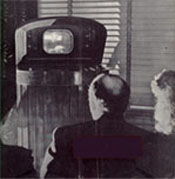 While Fundamentalist and Evangelical Protestants quickly became concerned about the programs transmitted over the new medium, some also saw it as a new means of communicating the Gospel. Potential TV broadcasters were concerned that the opportunity be open to all who could pay the costs and meet industry standards. They wanted the new industry to avoid the restrictions that had for many years limited the hours of religious radio broadcasts to those of a few "representative" mainline denominations.
While Fundamentalist and Evangelical Protestants quickly became concerned about the programs transmitted over the new medium, some also saw it as a new means of communicating the Gospel. Potential TV broadcasters were concerned that the opportunity be open to all who could pay the costs and meet industry standards. They wanted the new industry to avoid the restrictions that had for many years limited the hours of religious radio broadcasts to those of a few "representative" mainline denominations.
Walter Maier, the popular Lutheran radio evangelist, made a television broadcast of The Lutheran Hour at a local station on January 1, 1949. A few other preachers also made local broadcasts, going out to the audience of a single station. But the costs and the still-developing technical requirements of the new medium had discouraged any nationwide broadcast of a Christian evangelistic program, until October 9, 1949.
On that date, a Sunday evening, Percy and Ruth Crawford's Youth on the March 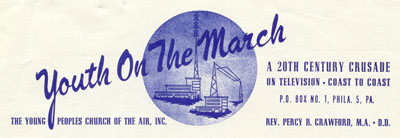 went on the air over the ABC network, broadcast from the WFIL-TV station in Philadelphia and carried by "most" of its eleven affiliates. The day marked a milestone in the history of the television segment of the electronic church.
went on the air over the ABC network, broadcast from the WFIL-TV station in Philadelphia and carried by "most" of its eleven affiliates. The day marked a milestone in the history of the television segment of the electronic church.
The Crawford's use of a variety-type format, as well as skits and dramatic presentations, was based on their radio broadcasts (which had been on the air in Philadelphia since 1931). Their show and the changes they introduced to it over the years served as a model to other religious television broadcasters who were to follow.
This exhibit is intended to document and celebrate that first broadcast, which you can view by clicking the middle icon below. The first and third links take you to biographical information about the Crawfords, articles written prior to or following the broadcast, and the descriptive guide of the Crawford materials available at the Archives. Choose from among these links to launch you on you tour.
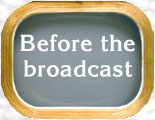 |
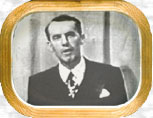 The Broadcast
The Broadcast
Oct. 9, 1949 |
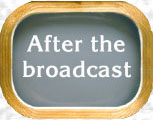
|
 While Fundamentalist and Evangelical Protestants quickly became concerned about the programs transmitted over the new medium, some also saw it as a new means of communicating the Gospel. Potential TV broadcasters were concerned that the opportunity be open to all who could pay the costs and meet industry standards. They wanted the new industry to avoid the restrictions that had for many years limited the hours of religious radio broadcasts to those of a few "representative" mainline denominations.
While Fundamentalist and Evangelical Protestants quickly became concerned about the programs transmitted over the new medium, some also saw it as a new means of communicating the Gospel. Potential TV broadcasters were concerned that the opportunity be open to all who could pay the costs and meet industry standards. They wanted the new industry to avoid the restrictions that had for many years limited the hours of religious radio broadcasts to those of a few "representative" mainline denominations. went on the air over the ABC network, broadcast from the WFIL-TV station in Philadelphia and carried by "most" of its eleven affiliates. The day marked a milestone in the history of the television segment of the electronic church.
went on the air over the ABC network, broadcast from the WFIL-TV station in Philadelphia and carried by "most" of its eleven affiliates. The day marked a milestone in the history of the television segment of the electronic church.







